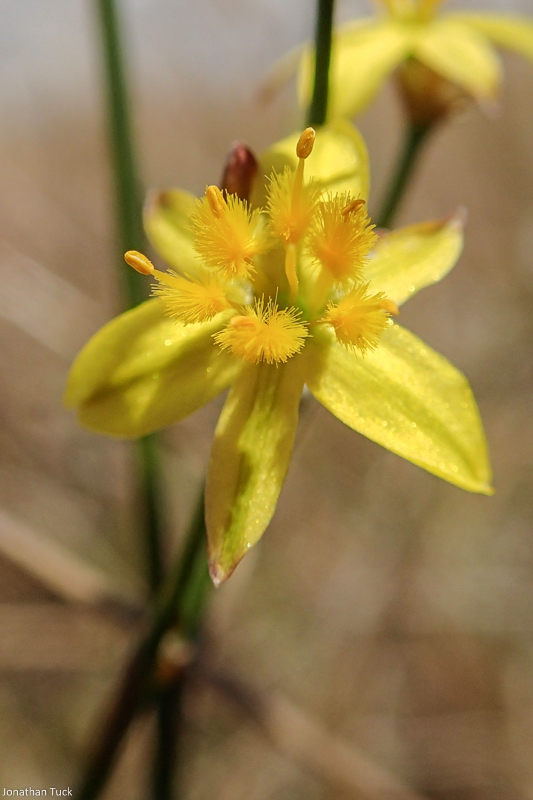No time to sit and watch the grass grow at Mortlake Common!
Over the last year or so, NGT has been actively involved in the management of the 304 hectare Mortlake Common Flora Reserve grassland. From the window of a car (and particularly if your mind has already arrived at the Mortlake bakery) it might look like just another paddock, but a walk across it reveals a huge diversity of native flora and even a large seasonal wetland hiding amongst the grass.
When you see a summer breeze pushing waves across a sea of grasses at Mortlake, you can easily see what attracted graziers to the volcanic plains region! Heavy, cracking volcanic soils made life difficult for trees but were ideal for grasses and herbs, leaving a thinly-wooded undulating grassland that was ready for sheep and cattle to move in.
Over time, most of the native grasses on the Volcanic Plains were replaced with higher production pasture grasses and the soils have been enriched for agricultural purposes, reducing the native grasslands to just 1% of their former range. Weeds have moved in and the pressures from adjacent farmland and towns are always pushing at the fences.
Active management is now needed to conserve these isolated grasslands, including weed control, revegetation and burning to manage biomass. Recent work at Mortlake has involved conservation measures for a population of threatened Western Gaping Leek-orchids (Prasophyllum sp. aff. correctum), including weed surveys and control of highly invasive weeds including Gorse, thistles and weedy grasses such as Phalaris and Yorkshire Fog.
Gorse control was undertaken by Goldfields Weed Management over the last year and has had good success, although with the long-lived seedbank (up to 40y) it’ll be an ongoing management issue. While there are challenges, there are also some great opportunities to enhance the quality of the grassland and the seasonal wetland.
NGT, Parks Vic, DELWP and community groups are currently looking at ways to move forward with the conservation of Mortlake Common. Weed control, burning, flora monitoring and site drainage issues are all on the cards. We’ll be running a community grassland event as the weather warms up and all are welcome, more details to come.
If you’d like to find out more about the project, contact Jonathan Tuck at
This project is supported by a grant from the Victorian Government
under the Victorian Environmental Partnerships Program (VEPP)





